Today, we will show you how to make our ultimate pickle brine recipe. It only requires 4 basic pickling ingredients: vinegar, water, salt and sugar. You can easily pickle any vegetable with this brine.
So, read on to learn all about this process so you can make your own pickles too. Start with our quick pickled cabbage if you want![feast_advanced_jump_to]
The basic ratio for quick pickles is 1:1 vinegar to water, and includes some combination of salt and sugar. Another ratio that is commonly followed is the 3:2:1 method, using three parts vinegar, two parts water, and 1 part sugar.

What Is Pickle Brine?
In the simplest explanation, pickle brine is the liquid used to help pickle (and ultimately preserve) fruits and vegetables. Yes, all types of fruits and vegetables!
This pickling liquid is made with a combination of water, vinegar, sugar and salt. There are some additional flavoring and functional ingredients. But, these four are essential in a basic pickle brine recipe.
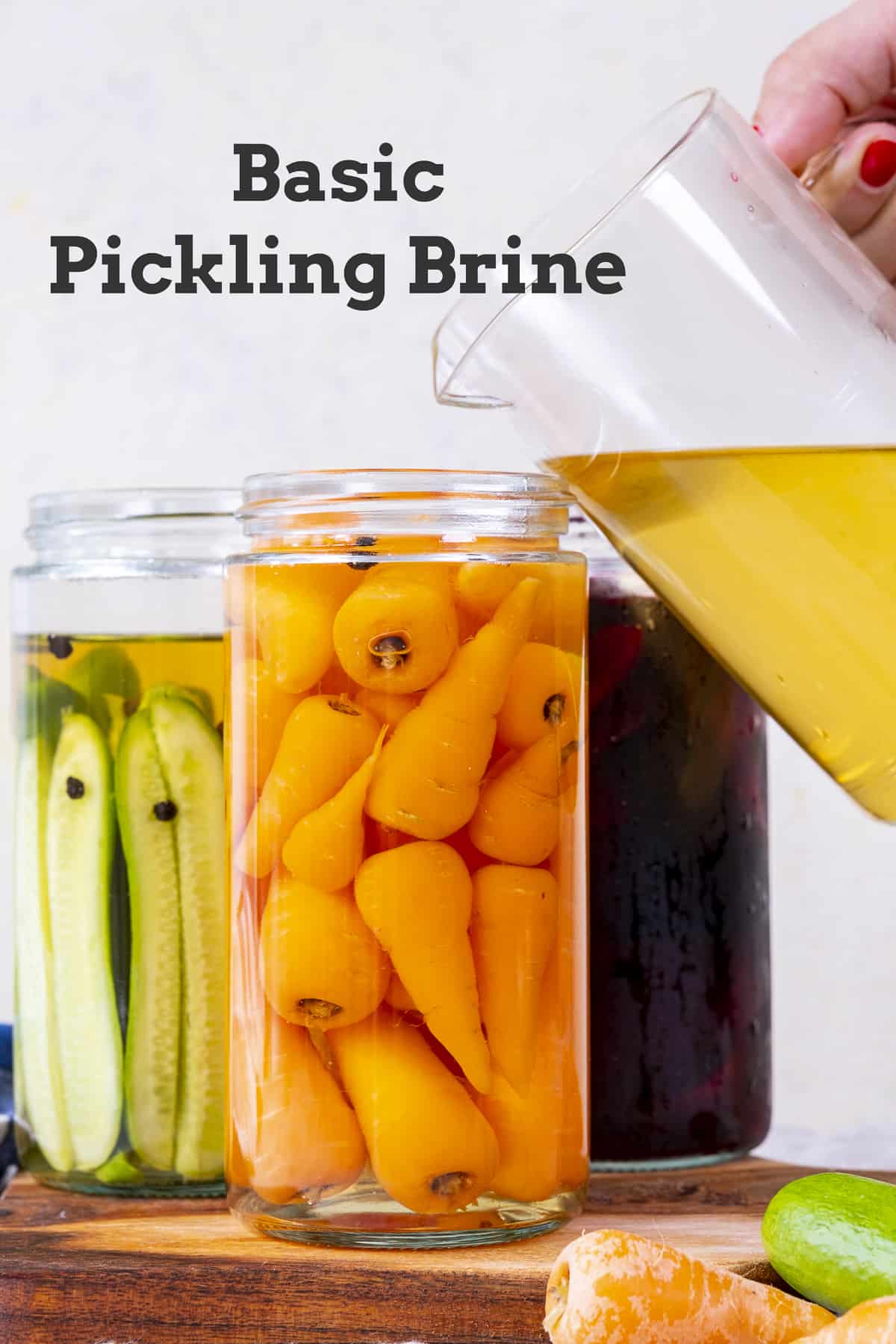
They help create a liquid in which fresh vegetables and fruits can be preserved for a long time. It creates an environment that is unlivable for mold. And simultaneously, they are flavored and get an uber-crisp texture too.
It is so easy to make homemade pickle brine that you dont really need to buy it from store. Lets see what we need.
A classic brine for pickles recipe always includes at least these four ingredients: water, vinegar, salt, and sugar.
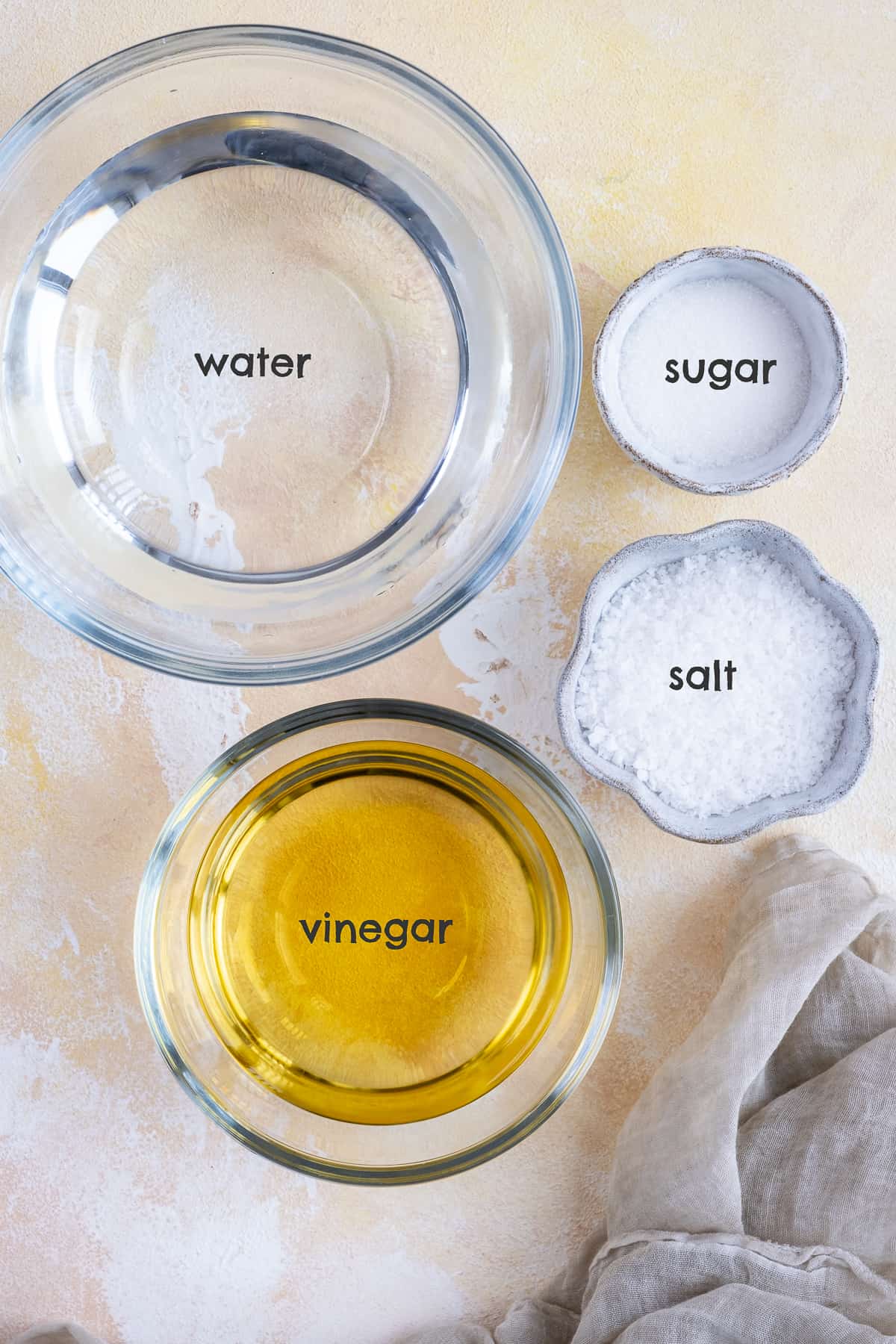
Water: It is added to help achieve the perfect pickling brine ratio, which is 50% water and 50% vinegar. It helps you have the right amount of acidity to work as a pickle (and prevent bacterial growth) but not overwhelm the flavor.
The remaining ingredients are more functional.
Vinegar: In this recipe, we use regular apple cider vinegar with a 5% acidity. But you can substitute it with any vinegar except balsamic vinegar or malt vinegar. Distilled white vinegar, white wine vinegar and rice vinegar work fine. Just keep in mind that the vinegars flavor will be transferred to the pickling vegetables.
If you dont like the taste or smell of vinegar, you can use the same amount of lemon juice. If you are not sure about the acidity of the lemons, add in a little citric acid too.
Salt: Use kosher salt, sea salt or pickling salt. Dont use table salt for a brine as it contains iodine, anti-caking agents and additives, which might effect the quality of pickles you are making.
Sugar: This is not a sweet pickle brine recipe. It is more on the tangy side. A little sugar in our recipe gives a subtle sweetness to the tangy brine and pickles. Of course, you can completely leave it out if you dont want any sweetness.
There is an endless amount of simple add-ins that will completely change the flavor of your brine. They can be added directly into the jars with the vegetables or into the brine liquid when it heats. Either way, you will add their flavor.
Some of the best pickling spices to add are whole spices like mustard seeds, coriander seeds, celery seeds, dill seeds, black peppercorns, allspice berries, cinnamon sticks. Also spices like red pepper flakes, bay leaf, and turmeric would be great additions. And, if you want to make it spicy, you can add some dried or fresh chili peppers too. And, to make your life easier, you can find pre-made pickling spice blends at the store.
Herbs are great additions too. Our favorites are fresh dill, parsley, rosemary, thyme or oregano. We dont recommend boiling them with the brine liquid. Place the herbs you want directly in the jars along with the vegetables and then pour the brine over them.
For even more flavor, you can also add aromatics like garlic, green onions (aka scallions), shallots or ginger into the jars.
Now lets learn how to make an easy pickle brine from scratch. You only need a couple of ingredients to start with. But, the recipe weve developed allows you to play around with the spices and herbs as much as youd like!
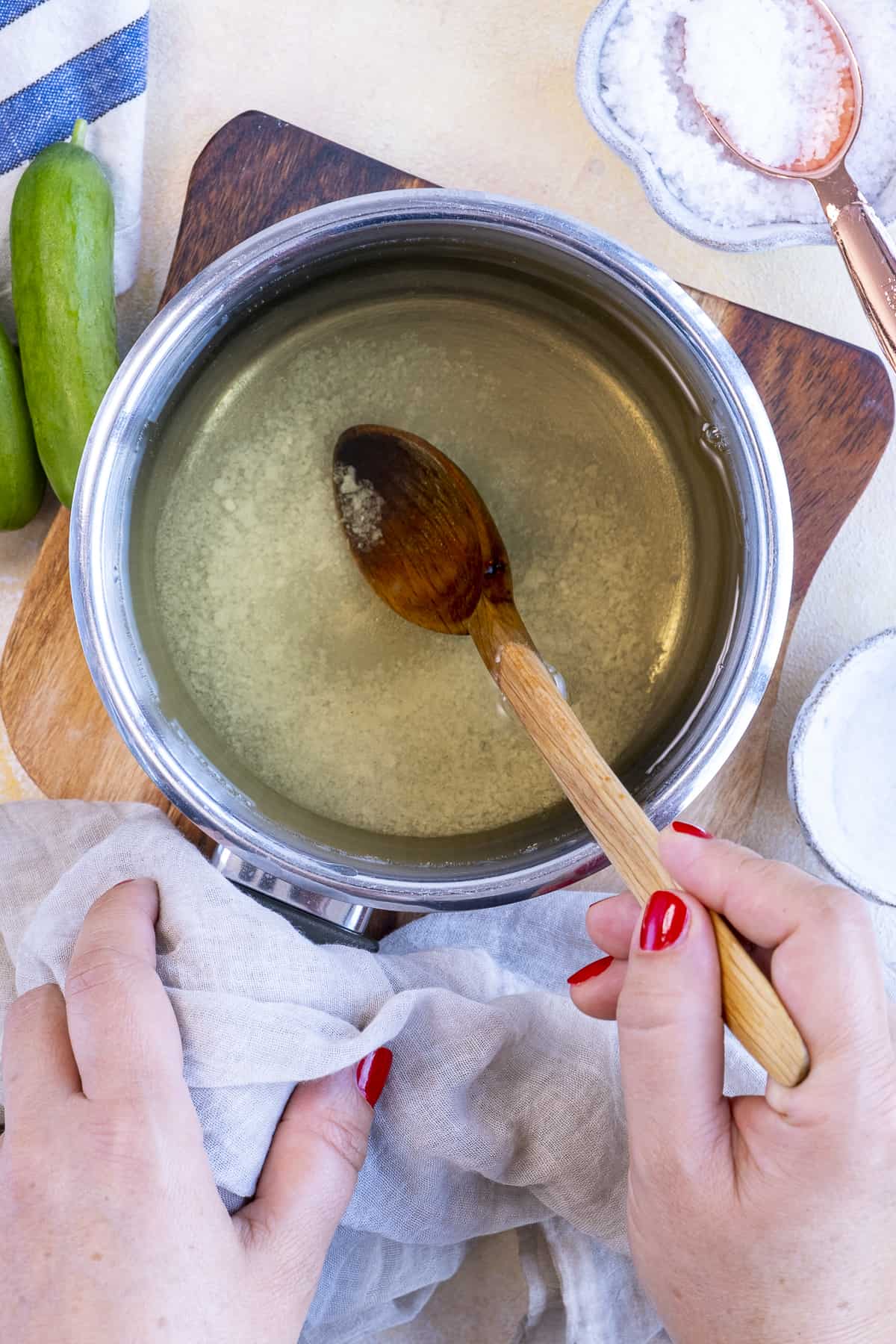
Boil the pickling liquid: To start, combine 2 cups water, 2 cups vinegar, 1 tablespoon sugar and 3 tablespoons kosher salt in a medium saucepan. If you want to add spices like mustard seeds, coriander seeds or dill seeds in your brine, add them in the saucepan at this step. Then bring it to a boil over medium-high heat. Double-check that all the sugar and salt are dissolved before moving on.
Cool the liquid slightly: Remove the saucepan from the heat and allow it to cool for about 10 minutes. Use it immediately to pickle vegetables like carrots, onions, cucumbers, radishes, green tomatoes or zucchini. We also love pickling beets with this brine.
If you are not planning to use your pickle brine right away to make pickles, let it cool completely and store it in jars or containers with lids in the fridge to use later. It keeps well for up to 2 months.
When you are ready to use, heat it a bit if you are planning to make quick pickles aka refrigerator pickles. If you are planning to make fermented pickles, use it cold.
1. Sandwich season is upon us, and it’s imperative to have a stash of pickles on hand, which make nearly all sandwiches better, from assemblies as simple as sliced deli turkey and Swiss cheese to more whimsical combinations with roasted sweet potatoes and ramp aioli.
Are you ready to pickle? Gather your raw vegetables: carrots and onions are a nice combination.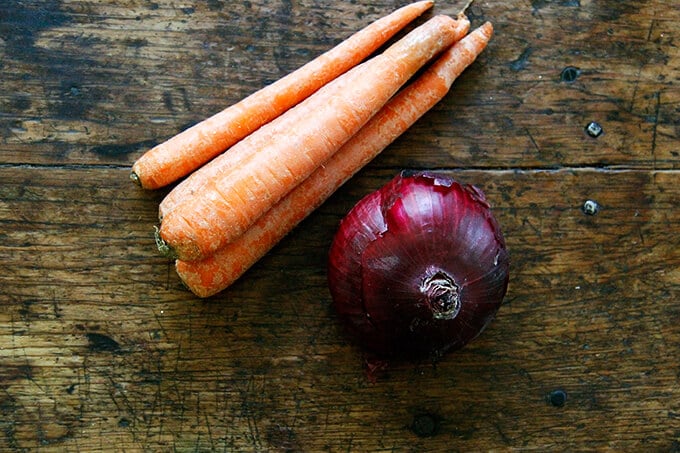
Pour brine over top. Let cool briefly (or to room temperature), then stash in the fridge.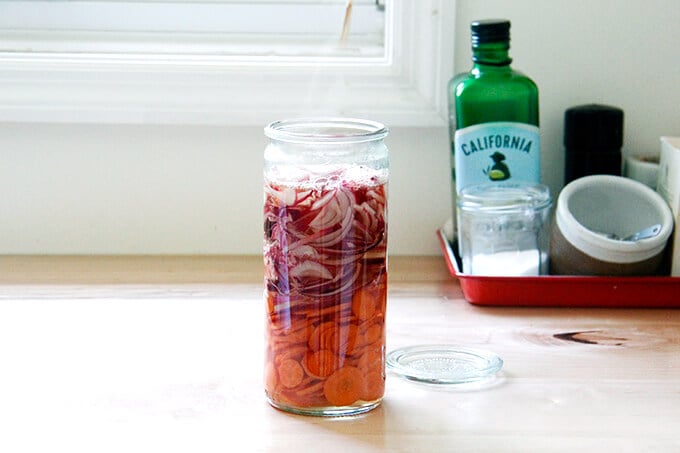
2. There’s nothing wrong with store-bought pickles, but it’s fun to know how to make pickles from scratch, and, as with the aioli, the process couldn’t be easier.
Slice them thinly: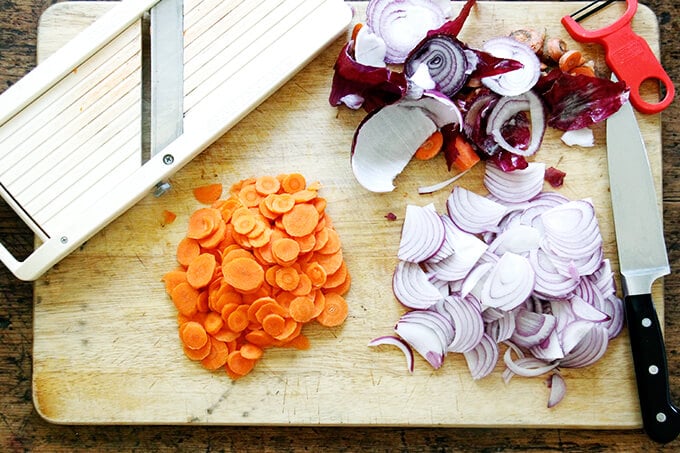
How to Pickle ANYTHING! Quick Pickling Tutorial.
FAQ
What is the 321 pickle rule?
Can I add sugar to pickling vinegar?
What is the ratio of liquid to pickles?
Can you pickle with 4 percent vinegar?
What is a good vinegar to water ratio for Pickles?
The perfect ratio will depend on your personal taste preferences and the type of pickles you’re making. However, a general rule of thumb is to use equal parts vinegar and water, which results in a 1:1 ratio. If you prefer a less tangy pickle, you can adjust the ratio to use more water and less vinegar.
How much pickle juice should one have per day?
Pickle juice has a lot of vinegar and sodium, so it should be used sparingly. There is no recommended amount of pickle juice you should drink each day.
What vinegar should I use for Pickles?
Blanch: green beans (optional, but helps preserve their color) For quick pickles, a basic brine is equal parts vinegar and water, but you can adjust the ratio to your preference. Any basic vinegar is game — white vinegar, apple cider, white wine, and rice vinegar all work well. You can use these vinegars alone or in combination.
Can you add sugar to pickle vinegar & water?
Note: The above ingredient list is just a basic guideline, and you can adjust the ratio and season to your liking. Sugar Notes: However, if you prefer a slightly sweeter pickle, you can add 1-2 tablespoons of sugar to the vinegar and water mixture.
